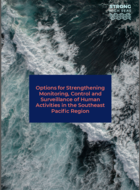Presentation
This report introduces the mesopelagic zone and the current status of scientific research and fishery development. It summarises the existing regulatory framework for the management of mesopelagic fisheries in ABNJ and assesses some possible approaches to governance, including regulation through regional fisheries management organisations (RFMOs), environmental impact assessment (EIA) and management measures under a future international treaty on biodiversity beyond national jurisdiction (BBNJ Agreement), and a moratorium on mesopelagic fishing.
Key Messages
- The mesopelagic or "twilight" zone plays a critical role in the global carbon cycle and marine food webs, but there are considerable gaps in our scientific knowledge.
- There is growing interest in exploring commercial fisheries in the mesopelagic zone, yet current governance frameworks may not be equipped to manage a new fishery with unique characteristics.
- The UN Convention on the Law of the Sea and Fish Stocks Agreement require States to cooperate to manage fisheries, but States, acting through regional fisheries management organisations (RFMOs), have been slow to integrate biodiversity into management processes.
- A future agreement on high seas biodiversity could strengthen environmental assessments and provide for new management tools, such as marine protected areas (MPAs).
- In the near term, a moratorium on mesopelagic fishing in international waters would allow for the development of scientific knowledge and appropriate governance mechanisms.



